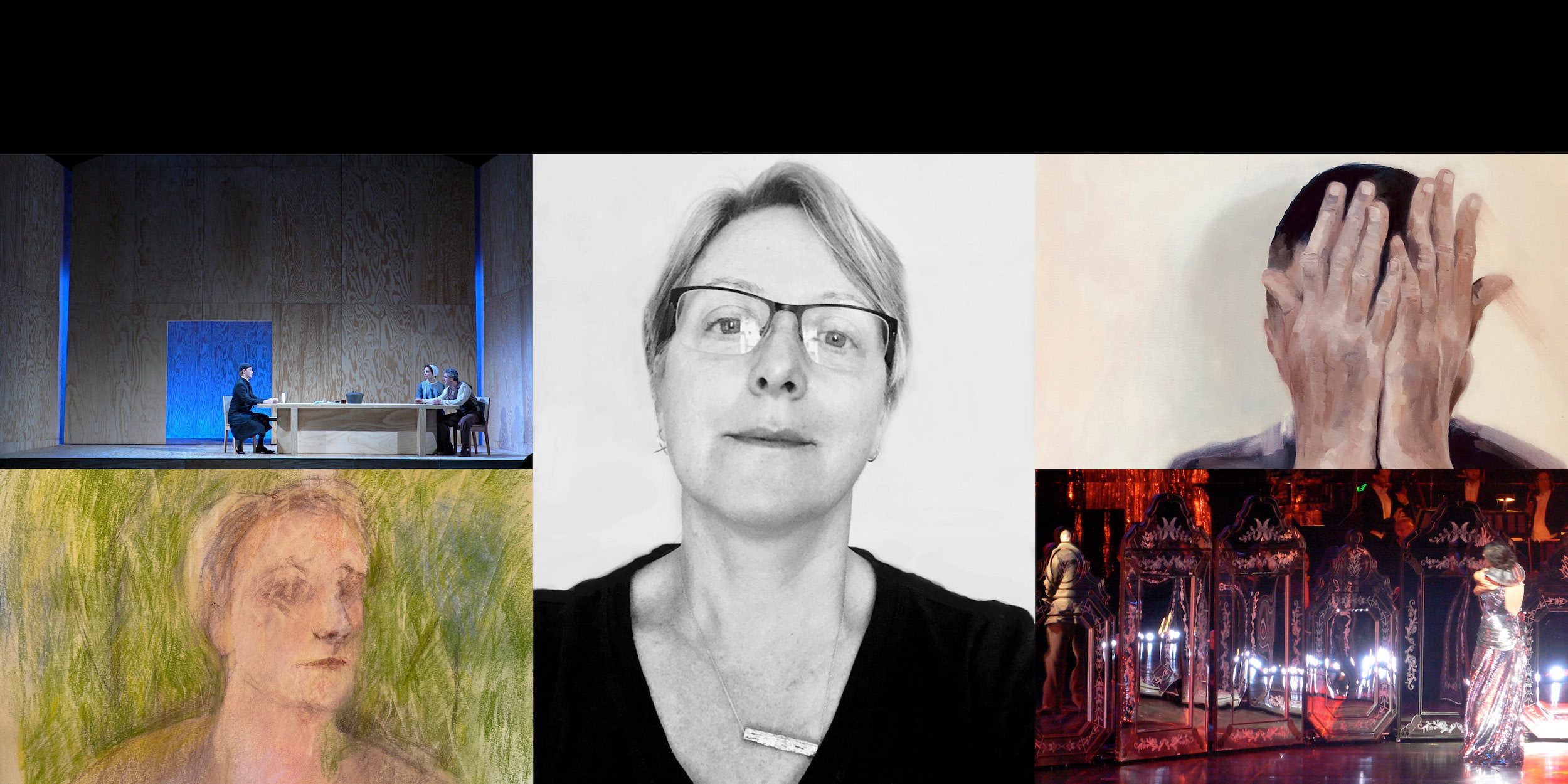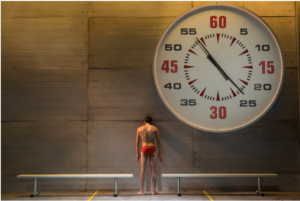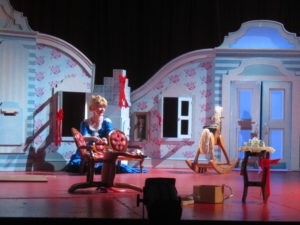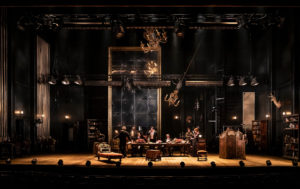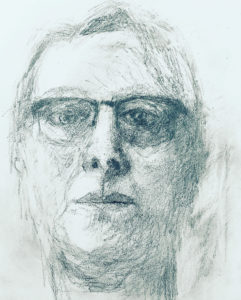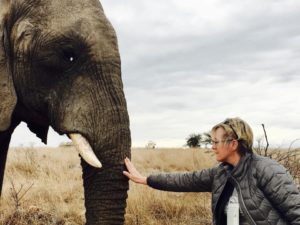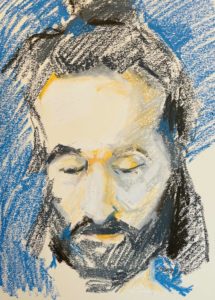Photos: Top Left – ‘The Crucible’ at Great Lakes Theatre, set design by Narelle Sissons; Center – Narelle Sissons; Top Right – Oil painting by Narelle Sissons;
Botttom Left – ‘Green Portrait’ by Narelle Sissons; Bottom Right – ‘Der Ferne Klang’ at Bard SummerScape, set design by Narelle Sissons
By Shannon Musgrave
May 24, 2022
After 15 years at CMU, Professor of Design Narelle Sissons Will Pursue Her Next Curiosity
For Narelle Sissons, the creative impulse to make and build could very well be part of her genetic code. Tracing back to the early 1800s, the family business – Sissons Brothers & Co. –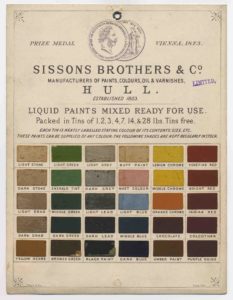 manufactured paints, oils, and varnishes, and contributed to the chemistry of modern house paints. Her maternal great-grandmother “thought with her hands” as a maker of hats and clothes. Her paternal uncle, a landscape architect. And her father’s curiosity for the world sparked ideas like testing Foucault’s pendulum theory in the five-floor stairwell of their Yorkshire house. Narelle’s family tree bears makers, designers, and innovators. And she is no exception.
manufactured paints, oils, and varnishes, and contributed to the chemistry of modern house paints. Her maternal great-grandmother “thought with her hands” as a maker of hats and clothes. Her paternal uncle, a landscape architect. And her father’s curiosity for the world sparked ideas like testing Foucault’s pendulum theory in the five-floor stairwell of their Yorkshire house. Narelle’s family tree bears makers, designers, and innovators. And she is no exception.
At six years old, she attended an English pantomime of the story of Aladdin. Sitting in the front row of the balcony, she viscerally remembers the curtain rising, revealing Aladdin’s cave – an entire world imagined, created, and built for this story. A scenic designer was born.
After completing high school in Sydney, Australia, Narelle returned to the UK to study theater design at Central Saint Martins and then film design at the Royal College of Art. During her time at Central, she met a directing student visiting from the United States and the two began working together. After graduating from the Royal College of Art, Narelle moved to New York City, where she was introduced to a network of directors or her same generation. She worked on productions at Juilliard, New York Stage & Film, and theaters big and small, up and down Manhattan.
“I didn’t say no to anything,” she remembers. “I just did everything. I found myself working in experimental, small spaces right up to Off-Broadway venues, and eventually designing at Roundabout Theater Company.”
Her advice to young designers just getting started: see as much as you possibly can; meet with as many directors of your generation as you can, as well as people whose work you admire; work with designers who need studio assistants; say yes to every opportunity.
After freelance designing for a number of years nationally and internationally, Narelle began adjunct teaching at Bard College in upstate New York. Her class was “Visual Imagination for the Modern Stage” and her students ran the creative gamut from actors to dancers to writers. Narelle was thrilled by watching her students develop their work and curiosities. A love of teaching was sparked.
She came to Carnegie Mellon University School of Drama in 2007.
“Narelle has had a profound impact on the school and the students since she joined our community in 2007,” said Anne Mundell, Interim Head of the School of Drama and Professor of Design. “She has contributed enormous curiosity, love of text, passion for collaboration and iteration, and deep rigor to her classroom and production. Her intellect and teaching style are surgical; when she starts as sentence with ‘what if,’ it is likely that an entire new vista will open up for a student as a result of that ‘what if’ question.”
Narelle’s philosophy of design is centered around ‘idea’ rather than ‘concept.’
“It’s a building process, developing ideas,” she said. “The word ‘concept’ always trips me up because it feels like it’s an applied approach on top of something that exists, where my philosophy as a set designer is to get a feeling for the world of the play, understand the character by absorbing the words – the textures, the colors, how it smells, how it feels, how the actors will inhabit the world – and start building from there. I will often look at extreme ends of each idea in my research phase and find the place that feels right. Allowing myself to play in the model, to be bold with ideas and to never choose the easy option.”
She describes the process of watching students develop and unpack ideas from a text, supporting those ideas with interesting research, and then using that research to create something tangible that actually works on stage as a thrilling experience for a professor.
Narelle has seen the School of Drama evolve throughout her 15 years on faculty. She attributes the dynamic nature of the program to its ability to respond to the needs of each new class and the evolution of its current students. More recently, she’s been pleased to see the work being done around diversity, equity, and inclusion.
“It’s been a slow but constant development ever since I’ve been at the school,” she said, noting that with the recent creation of the Anti-Racist & Equitable Practices in Theater curriculum and the We See You White American Theater demands, the work has picked up steam in the last couple of years.
“Those things are very positive and I hope that they continue, because whatever we create and practice in an educational setting is what filters its way into the profession,” she said.
Narelle’s decision to leave the School of Drama in pursuit of her curiosity for visual arts was not an easy one. But the fear of the unknown was part of her drive to take this leap of faith. Any time her students would come to her with a curiosity about something, she would encourage them to explore it.
“So I thought, well I’d better take my own advice and go and explore a bit,” she said.
Following her departure from CMU, Narelle plans to explore how performance and visual arts intersect. She took painting and drawing classes online during the pandemic, fueling her interest in fine art, and plans to study at the New York Studio School of Drawing, Painting & Sculpture. This life path may also trace back to her roots; Narelle credits her mother’s own decision to go back and study archaeology later in life (subsequently spending years at archeological sites in Egypt and Jordan) as a source of inspiration.
As she steps into this new unknown, Narelle hopes that her departure will not be felt as a loss, but rather an opportunity and space for something new – for the students and for whoever steps into the role – and that her leap of faith might inspire students to take their own risks and explore their every curiosity.
